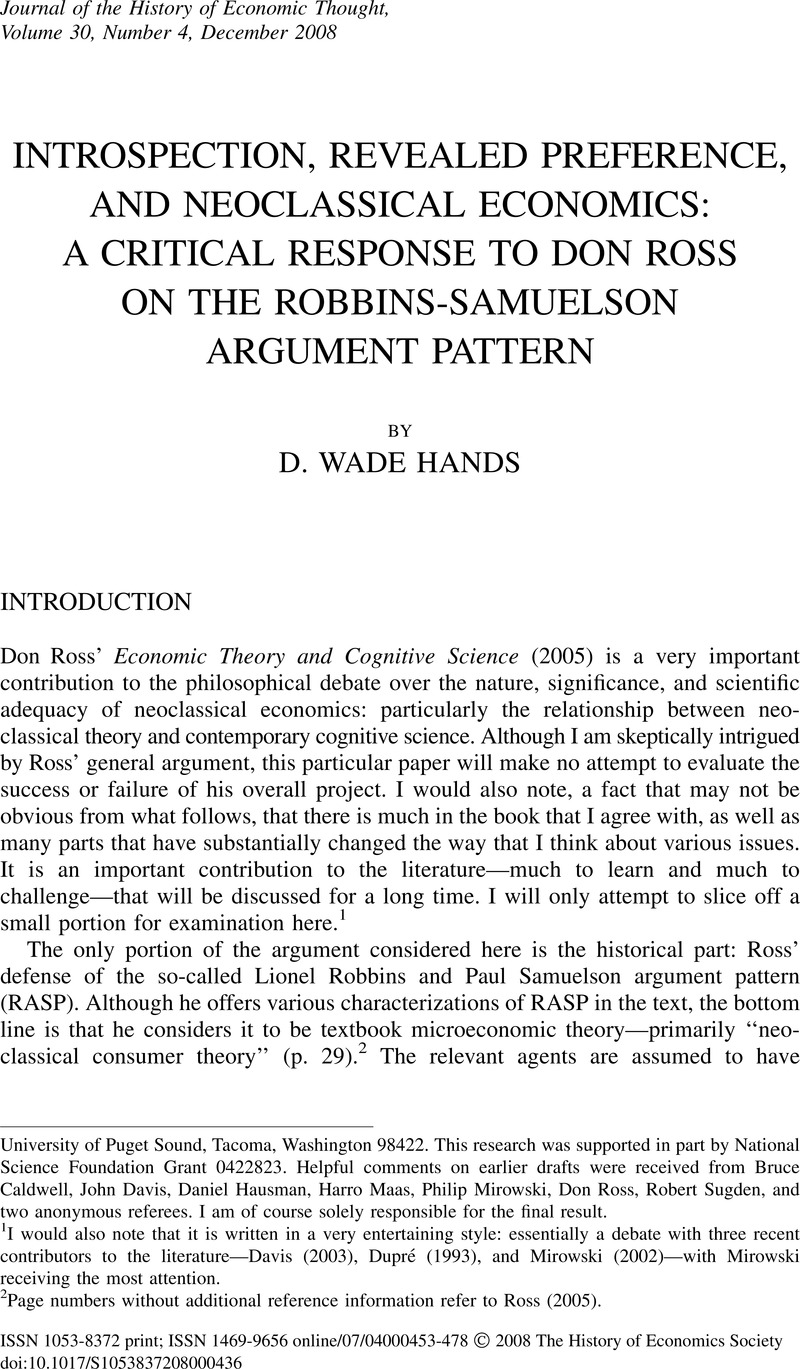Article contents
INTROSPECTION, REVEALED PREFERENCE, AND NEOCLASSICAL ECONOMICS: A CRITICAL RESPONSE TO DON ROSS ON THE ROBBINS-SAMUELSON ARGUMENT PATTERN
Published online by Cambridge University Press: 01 December 2008
Abstract

- Type
- Research Articles
- Information
- Copyright
- Copyright © The History of Economics Society 2008
References
REFERENCES
- 7
- Cited by




